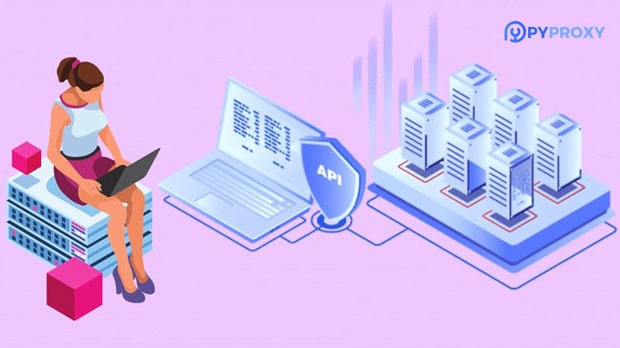In today's digital age, the need for privacy and security while browsing the internet has grown significantly. Dedicated ip proxies are essential tools for users looking to maintain their anonymity, access geo-restricted content, and perform various high-frequency online operations. The main advantage of using a dedicated ip proxy is the exclusive nature of the IP address, which reduces the risks of being flagged or blocked by websites. However, the real question is: how stable is a dedicated IP proxy under high-frequency operations? This article will delve deep into the stability of dedicated IP proxies when used for high-frequency activities, such as web scraping, data mining, and automated tasks, while providing an insightful overview of the factors that influence their reliability and performance. What Is a Dedicated IP Proxy?Before exploring the stability of a dedicated IP proxy in high-frequency operations, it's essential to understand what a dedicated IP proxy is. A dedicated IP proxy is an exclusive internet address assigned to a specific user or organization. Unlike shared proxies, which are used by multiple people simultaneously, a dedicated proxy ensures that only the user who purchases it can access the proxy’s IP address. This level of exclusivity makes dedicated IP proxies ideal for users requiring privacy and security in their online activities, such as businesses or individuals engaged in web scraping, automated tasks, or accessing geo-restricted content.The Role of High-Frequency OperationsHigh-frequency operations refer to the use of automated scripts, bots, or tools that require constant and rapid access to online resources. Such operations are common in activities like web scraping, price comparison, social media automation, and data mining. These tasks involve sending numerous requests to websites in a short period, which can lead to performance issues, including IP bans or slowdowns if not managed correctly. In these scenarios, the stability of the proxy becomes crucial to ensure that the user’s operations can continue without interruptions, timeouts, or slow speeds.Factors Affecting Stability of Dedicated IP Proxies in High-Frequency OperationsSeveral factors influence the stability of a dedicated IP proxy, especially when used in high-frequency operations. Understanding these factors can help users make informed decisions when selecting and utilizing a dedicated IP proxy for their specific needs.1. IP Reputation and TrustworthinessThe reputation of the IP address plays a vital role in its stability during high-frequency operations. Dedicated IP proxies that are previously flagged or blacklisted may experience issues such as being blocked or slowed down by websites. On the other hand, a new, clean IP address with no history of suspicious activity is more likely to perform well in high-frequency tasks. Some proxy providers offer IP addresses with a solid reputation, which helps minimize the risks of being blocked or experiencing downtime during operations.2. Bandwidth and SpeedBandwidth and speed are critical for high-frequency operations. Since dedicated IP proxies are typically purchased with specific bandwidth and speed parameters, users must ensure that their chosen proxy service offers sufficient capacity for their needs. A lack of bandwidth can cause slow data retrieval, which significantly impacts high-frequency tasks like web scraping. Therefore, users should choose a dedicated IP proxy provider that offers high-speed connections with enough bandwidth to handle multiple requests without degrading performance.3. Proxy Provider InfrastructureThe infrastructure of the proxy provider is a crucial element in ensuring stable proxy performance during high-frequency operations. A provider’s network capacity, reliability, and server quality can affect the stability of the proxy. Providers with robust infrastructure can ensure smooth operations even under high-demand circumstances, while those with poor network quality might lead to frequent downtimes or performance issues. Users should select providers with proven records in offering high-quality, stable proxy services.4. Rotation and IP Pool SizeFor high-frequency operations like web scraping or automated browsing, IP rotation is often used to avoid detection and blocking by websites. Dedicated IP proxies typically do not support automatic IP rotation like shared proxies; however, some providers offer rotation features for dedicated IP users. The larger the IP pool available for rotation, the less likely the proxy will be flagged or blocked during high-frequency tasks. Using a large pool of dedicated IP addresses ensures that users can continue their operations without worrying about reaching rate limits or experiencing downtime.5. Proxy Configuration and CustomizationCustomizable proxy settings are another key element for maintaining stability in high-frequency operations. Dedicated proxies often offer more flexibility in configuration compared to shared proxies. Customization options, such as adjusting request rates or setting up specific geographical targeting, can significantly improve the efficiency and stability of high-frequency operations. By configuring the proxy according to the specific task at hand, users can reduce the risks of overloading the proxy server and ensure smoother performance.Challenges with Dedicated IP Proxies in High-Frequency OperationsWhile dedicated IP proxies offer several advantages, there are certain challenges when using them for high-frequency operations. Some of these challenges include:1. Potential for ExhaustionIn high-frequency tasks, a dedicated IP can become exhausted if too many requests are sent in a short period. If the proxy provider does not offer sufficient resources to handle large volumes of requests, users may experience slowdowns, timeouts, or even IP bans. To prevent this, users should carefully manage the rate of requests sent through the dedicated IP proxy and, if necessary, invest in additional proxies or rotate IP addresses to avoid overloading a single IP.2. Cost and MaintenanceDedicated IP proxies are generally more expensive than shared proxies. The cost of maintaining a dedicated proxy for high-frequency operations can be significant, particularly if multiple proxies are required to meet operational demands. Additionally, regular monitoring and maintenance are necessary to ensure the proxies remain effective and stable. Users should factor in these costs and plan accordingly to avoid unexpected expenditures.Best Practices for Ensuring Stability of Dedicated IP ProxiesTo maximize the stability of dedicated IP proxies during high-frequency operations, users should adopt certain best practices:1. Proper IP Rotation StrategyEven though dedicated IP proxies are not inherently designed for IP rotation, implementing a manual rotation strategy can help distribute requests across multiple IP addresses, reducing the risk of overloading a single proxy. This strategy is particularly beneficial when performing tasks like web scraping.2. Regular Monitoring and Performance TrackingUsers should regularly monitor the performance of their dedicated IP proxies to identify any signs of instability. Performance tracking tools can help users detect slowdowns, timeouts, or blocks in real time, allowing them to adjust their operations accordingly.3. Choose a Reliable Proxy ProviderChoosing a reputable and reliable proxy provider is essential for ensuring the stability of dedicated IP proxies in high-frequency operations. A provider with strong infrastructure, a clean IP pool, and good customer support can help users avoid common issues associated with unstable proxies.In conclusion, dedicated IP proxies can be highly stable for high-frequency operations when the right factors are considered. These factors include IP reputation, bandwidth, the provider’s infrastructure, and the ability to manage IP rotation and proxy customization. While challenges exist, such as potential exhaustion and cost concerns, adopting best practices and choosing a reliable proxy provider can ensure optimal performance. By understanding the nuances of dedicated IP proxies and following the recommended strategies, users can maintain the stability and efficiency of their high-frequency operations with ease.
Sep 10, 2025



































































